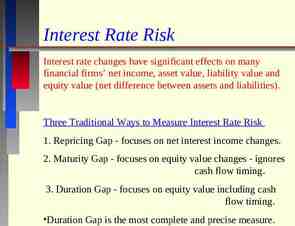9.2 Assessing innovation The importance of being innovative and the
24 Slides2.60 MB

9.2 Assessing innovation The importance of being innovative and the ways to do it

Learning outcomes You should be able to understand: The difference between product and process innovation and why it is important for businesses. The ways in which a business could become more innovative

Overview of key concepts Innovation is important to business because it affects every functional area. It can be used to motivate the workforce as well as be a key marketing tool. It can be used to reduce waste and costs. Ideas, however, need to be protected from competitors.

Innovation Innovation is when a business exploits new ideas which have been developed. These ideas can be developed using R & D, which is the scientific investigation into: – New products – New manufacturing processes – New procedures to make the products.

Why innovate? Businesses who innovate can: Have access to new markets (Wii was marketed at families and older people as well as gamers). Create new products and demand (Apple created the tablet market with the iPad). Create new ways of doing business (Amazon dominate the online businesses).

Product innovation Definition: The development and marketing of the introduction of a new or redesigned, goods or services. The redesign could be more desirable functions (iPhone), new materials (GoreTex) or components (Land Rovers).

Process innovation Definition: Implementing a new or improved production process, delivery method or communication method. This can include software, equipment or techniques. Example: 3D model printing software allows manufacturers to make prototypes easily and cheaply. With delivery methods the tracking of customer orders using bar codes is very important for operating a JIT system within a car manufacturer.

Innovation Advantages Improved quality The ability to enter new markets Increase the value added of products USP Increase in product range to spread the risk Reduce costs and especially unit costs Improved flexibility/increased capacity Easier to meet regulations Reduce environmental impact of manufacturing process Increased market share Replace outdated products or processes Improve health and safety Provide a stimulating working environment Disadvantages Uncertainty of the demand for new products – a lot of money could be spent with little return Operational difficulties – especially through the learning curve productivity can be reduced Competition – rivals may be tempted to join the new market Generic products – copies can be manufactured – Hoover now has a bagless vacuum like Dyson

Becoming innovative Some businesses are intrinsically innovative, it is built into the DNA, the culture of the organisation demands it: Examples: – Apple – Microsoft – 3M – they allow their researchers to use 10% of their time at work working on their own ideas. This led to the birth of a glue which did not stick – the Post-It was developed and 3M has made a lot of money from this. Having a culture of innovation means you attract more innovative-minded people to work with you so it becomes a virtuous cycle.

Becoming innovative The methods by which businesses can become innovative are: – Introducing Kaizen techniques – Using Research & Development – ‘Intrapreneurship’ – Benchmarking.

Kaizen techniques Kaizen means ‘continuous improvement’ and was an idea which was developed in Japan and then brought to the west. It was the start of the ‘lean production’ ideas. Kaizen focuses on: – Eliminating waste – from every part of the manufacturing process – Improving productivity – every small detail is examined and reviewed. – Achieving sustained continual improvement in the product and process of an organisation. By targeting small incremental changes routinely over a long period a time then large improvements can be made. These techniques also empower employees and aid motivation.

Kaizen techniques

Kaizen techniques

Research & Development If a business does not have a R&D department to investigate improvements in the product or manufacturing process then they will have to rely on strategic mergers, takeovers or acquisitions (Unit 9.1) to get ideas. R&D in business falls into two forms: Customer orientated business (customer needs identified and then solutions found). Product orientated business (products are developed first and then markets sought). R&D spend will depend on the nature of the industrial sector – pharmaceuticals spend roughly 43% of revenue, computer and technology firms spend roughly 7% and other industries spend about 3.5%. Anything over 15% is considered a high technology business.

Research & Development

Tip Research and Development is DIFFERENT from market research!!!! R&D is the sustained investigation into new ways of doing things and nothing to do with gathering marketing information.

Intrapreneurship This is a relatively new term which means: The act of behaving like an entrepreneur while working within a large organisation. The skills and qualities of an entrepreneur are valuable to a business – they are not just for start-up businesses but a management style in itself.

Intrapreneurship Having an intrapreneurship attitude means taking initiative and doing something new without being asked to do so. This idea of management focuses employees to be innovative, creative and can transform ideas into profit for the organisation. Most businesses express this idea through job design (Unit 6) and Management style (unit 4). Entrepreneur management styles tend to try things until they are successful, learning from failures while continually controlling costs. It is these qualities which businesses would like used within large organisations as well.

Intrapreneurship

Benchmarking Definition: Identifying the best practice used in the production process and delivery of the product itself. This can be against other industries or used internally. Four key steps: 1. Understand in detail the existing business process. 2. Analyse the business processes of others. 3. Compare business performance against others analysed. 4. Implement steps to close the gap.

Benchmarking

Benchmarking

Benchmarking as a strategy If a business is using benchmarking as a strategy then there are different types to choose from: Strategic – identifying long-term strategies to improvement, implementation is also long-term so benefits may be delayed. Competitive – identifying key characteristics from the same sector, i.e. comparing exam results across high schools. Process – the production of process maps to compare processes across similar sectors. Functional – identifying just similar functions which need improvement. Internal – comparing how standardised data is used across a business. External – identify the ‘best in class’ and who has the ‘leading edge’. International – comparisons made internationally but in similar industries.

Becoming an innovative business For businesses to become innovative then several factors should be considered: Protecting ideas – ensuring sole ownership of an idea. Planning – business should be using the product life cycle (Unit 3) to ensure a portfolio of products in each section so that as one enters the maturity stage another is being launched. Culture – embedding the ideas of Kaizen or intrapreneurship into an organisation makes it a more innovative place to work. Secrecy – maintaining a competitive edge so that new products are only revealed when the business is ready (think of the iPhone 6 launch). Customer orientation – if businesses remember the customer needs in their innovation then it is easier to market new products to them.






